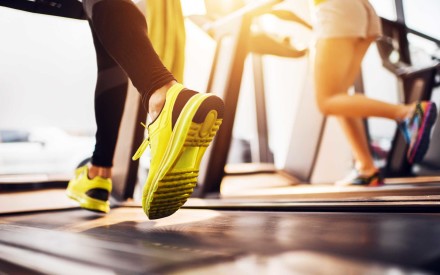Instead of setting vague goals like losing 20 pounds, make your hopes a reality with these subtle diet tweaks.
Eating at your desk or in front of the TV is distracting, and because your brain doesn’t fully realize what you’re eating, you could end up unsatisfied, even with big portions, says Alissa Rumsey, MS, RD, CDN, CSCS, spokesperson for the Academy of Nutrition and Dietetics. “People look down after their meal and have no memory of what was on their plate,” she says. “They don’t feel satisfied and are hungry again in an hour.” Ideally, you should spend the full 20 or 30 minutes it takes to eat focusing on your meal. If it’s unrealistic to leave your desk that long during lunch, take at least the first five to ten minutes chowing down without distractions, she says. Find out more about what healthy people do on their lunch breaks.
Pick the smallest container
Whether you’re at a salad bar or frozen yogurt shop, always grab the smallest dish offered. You’ll be surprised by how much you can pack inside, but you'll have less risk of going overboard like you would with an oversized container, says Amy Shapiro, MS, RD, CDN, founder of Real Nutrition NYC. “You can still fit a pound of food in the smallest container,” says Shapiro. “People go for the large plate so they don’t get hungry later, but you can always eat again later.”
Drink water before your coffee
A little bit of dehydration can mask as hunger,” says Rumsey. “You might not feel thirsty but are a little dehydrated and can feel hungry, even if you just ate.” But if you stay hydrated, it will be easier to recognize if your body actually needs the calories. Drink 16 ounces of water as soon as you wake up to replenish the water your body lost when you were sleeping, suggests Rumsey. Are you showing signs of dehydration?



